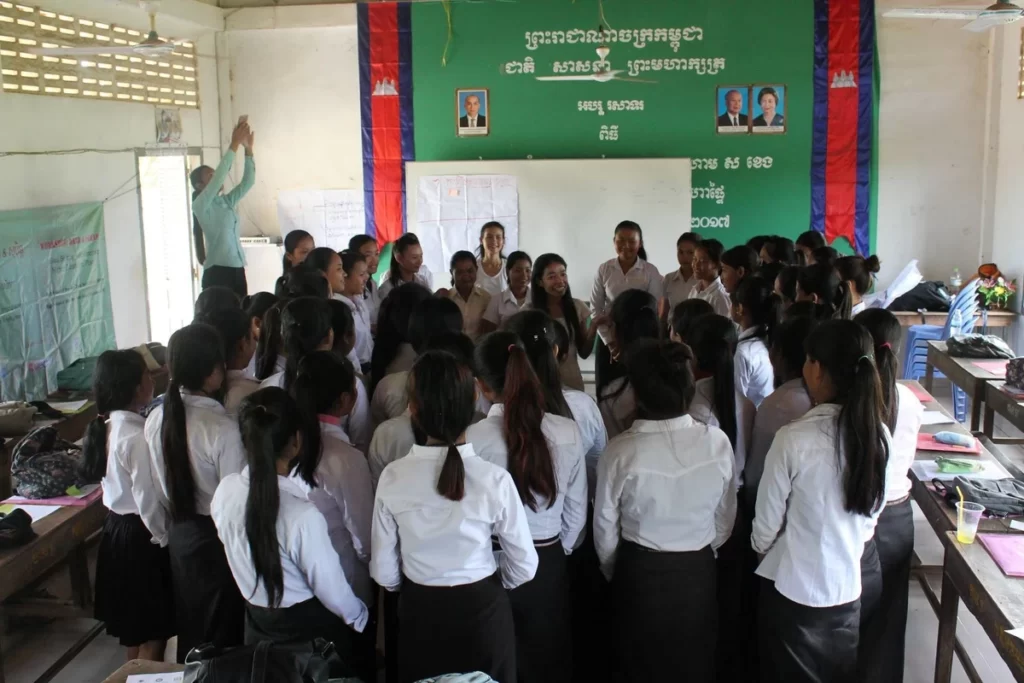By: Bolun Li
During the past month, we have hosted Change Magazine Essay Competition on Girls’ Education, it is the first such competition we have hosted for Change Magazine. It is hard to imagine how much influence this competition has: submissions from 20+ countries, post reach to 500,000+ audience, 300+ shares and various initiatives submitted.

But we have to be careful that this is not our achievement, in fact, we have achieved nothing except for identifying those applicants with big hearts for girls’ education and effective actions. It is not easy to see so many startups and grassroots initiatives coming out: too often people talk about the concept from the policy level, yet voices from the grassroots are so difficult to be heard. However from this competition, I see changemakers from Brazil, India, Cameroon, South Africa, UK and many other countries who have already take small steps in improving girls’ education. And we are happy to make their voices stronger through this competition.
According to UNICEF, Brazil ranked 4th in the absolute number of child marriage, with almost 3 million girls getting married before the age of 18. For long, the school textbooks have been dominated by male figures, with significant lack of female role models. As a result, Raphaele Godinho, a 17-year-old girl from Brazil, started the project “Rescuing and Valuing Woman”. The project encourages girls and boys to talk about female personalities and inequality of gender. It also gives girls space to openly share opinions and experiences of violence against women, and dropouts of girls for early marriage and child labor. The initiative is quite simple, however considering the fact that girls mainly receive information from their textbooks and classmates during high school, the efforts have been tremendous as they have changed the way how girls receive information, and bridged the gap in regular high school education.


Lorem ipsum dolor sit amet,Another simple but effective initiative, Jazz Hands, encourages children from privileged backgrounds to contribute towards capacity building of children from economically backward sections of society. This effort aims at bridging the learning divide that exists between children coming from different sections of society. A large and diverse volunteer base of children coming from English medium schools use drama as a creative medium to enhance the English speaking skills of children at Municipal schools and provide meaningful experiences for them. This initiative does not target at girls specifically but has huge potentials as too often girls disproportionately suffer from their economic status and family background. I am so excited that the team has spent remarkable efforts in making it happen. consectetur adipiscing elit. Ut elit tellus, luctus nec ullamcorper mattis, pulvinar dapibus leo.

Carole Audrey Nyemeck, a girl from Cameroon, proposes a startup solution called “Grit Academy”, which will focus on motivating girls to combine talents and efforts for eventual achievements. Long-term courses such as self-development, emotional intelligence, financial literacy, vocational activities, grant writing, communication and analytical skills would be developed. Too often educational projects focus on issues facing teachers and facilities, but ignore the driving role of students and their motivation and efforts. Such initiatives would be essential to improve the status of girls’ education.

Recently, Diinsider signed an MoU with Dare & Dream, an online/offline consulting platform working with rural girls from low income families in Cambodia. The aims are to empower girls to pursue higher education, to inspire them to chase their dreams, and to build girls’ networks platform to help them go into further education. While online platform provides girls convenience in communicating with their mentors via email, Facebook and skype, the offline platform allows them to directly reach out for face-to-face consultation. We will be working together with Dare & Dream to overcome their technological difficulties, insufficiency of human capitals and financing challenges.

These are just a few examples how young people and social entrepreneurs take actions to improve girls’ education. In fact, all of them are small or startup initiatives, and they have faced enormous challenges in growing their impacts. But too often, impactful innovations come from small initiatives, and changes happen when thousands and thousands of grassroots players work toward the same goal; in this case, improve education equality for girls in low income communities.
This perfectly represents the vision of CHANGE Magazine. We are dedicated to making real CHANGEs happen in girls’ education, together with thousands and thousands of grassroots changemakers.

